Venus flytraps are flowering plants known for their carnivorous behaviors. Gardeners and plant enthusiasts find the species fascinating because of its distinct quality. While this is true, some people struggle with keeping themselves healthy and alive.
Repotting the plant is necessary; luckily, we found ways how you can finish the task in a relatively simple manner.
Venus flytraps should be repotted yearly during the spring when they come out of dormancy. Transfer them into a larger container with a moist mixture of peat moss and perlite.
Enriched standard potting soil will harm the plant since they naturally grow in acidic and nutrient-poor environments.
If you are among many fascinated with Venus flytraps, read on and learn how to care for the unique plant. Aside from repotting, we have included soil, light, water, and other requirements necessary for its survival.
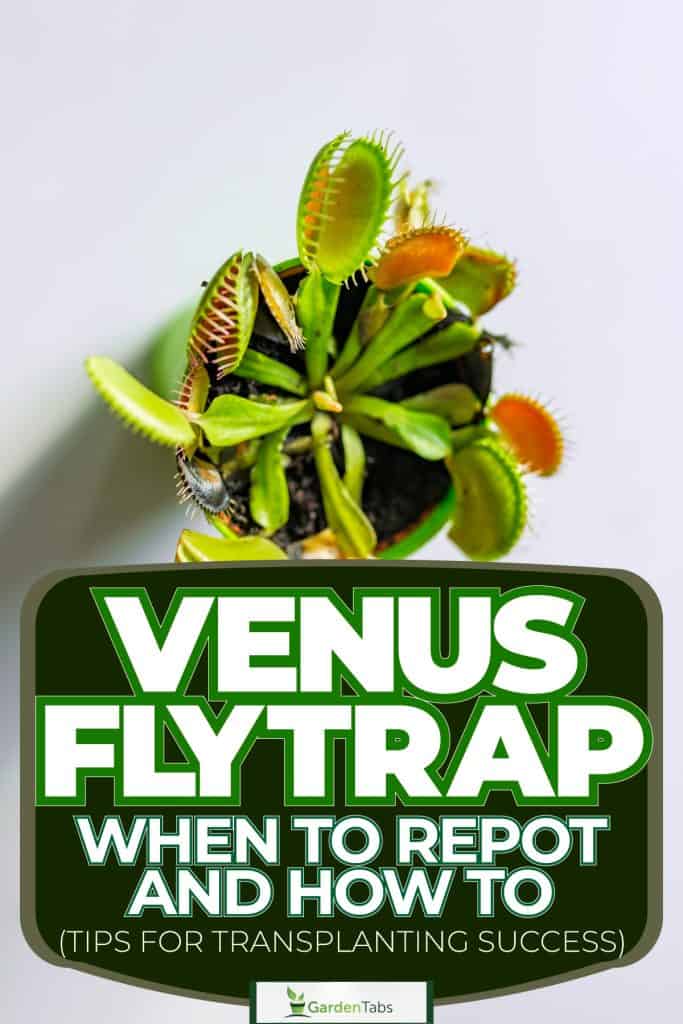
Venus Flytraps: An Overview
Venus flytraps, Dionaea muscipula, are carnivorous plants native to the marsh regions of Carolina. They thrive in moist, acidic soil lacking the necessary nutrients that other plants need to grow.
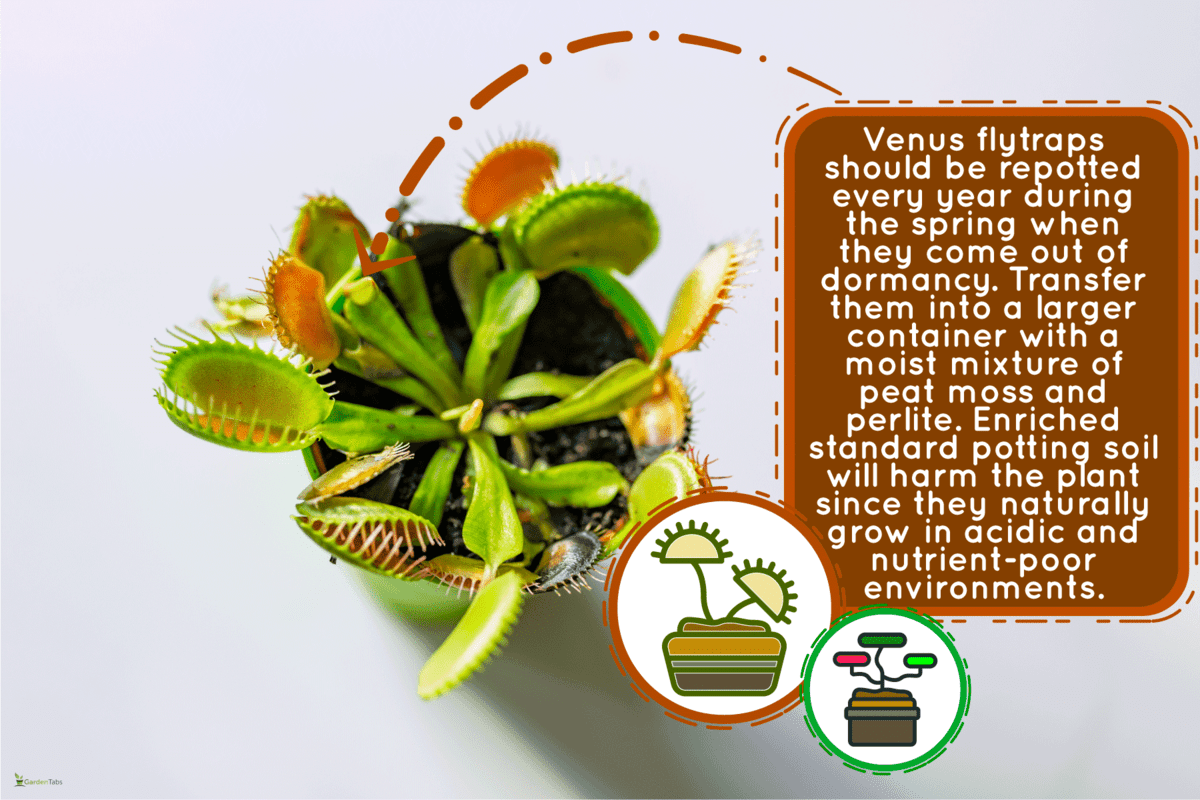
This natural habitat caused Venus flytraps to evolve and derive food from other sources- insects and spiders.
Two leaves with small bristles form a V-shaped structure that shuts and interlocks when stimulated.
The inner surfaces of the leaf lobes contain small projections, called trichomes, that are sensitive to contact and cause the "trap" to close when touched multiple times.
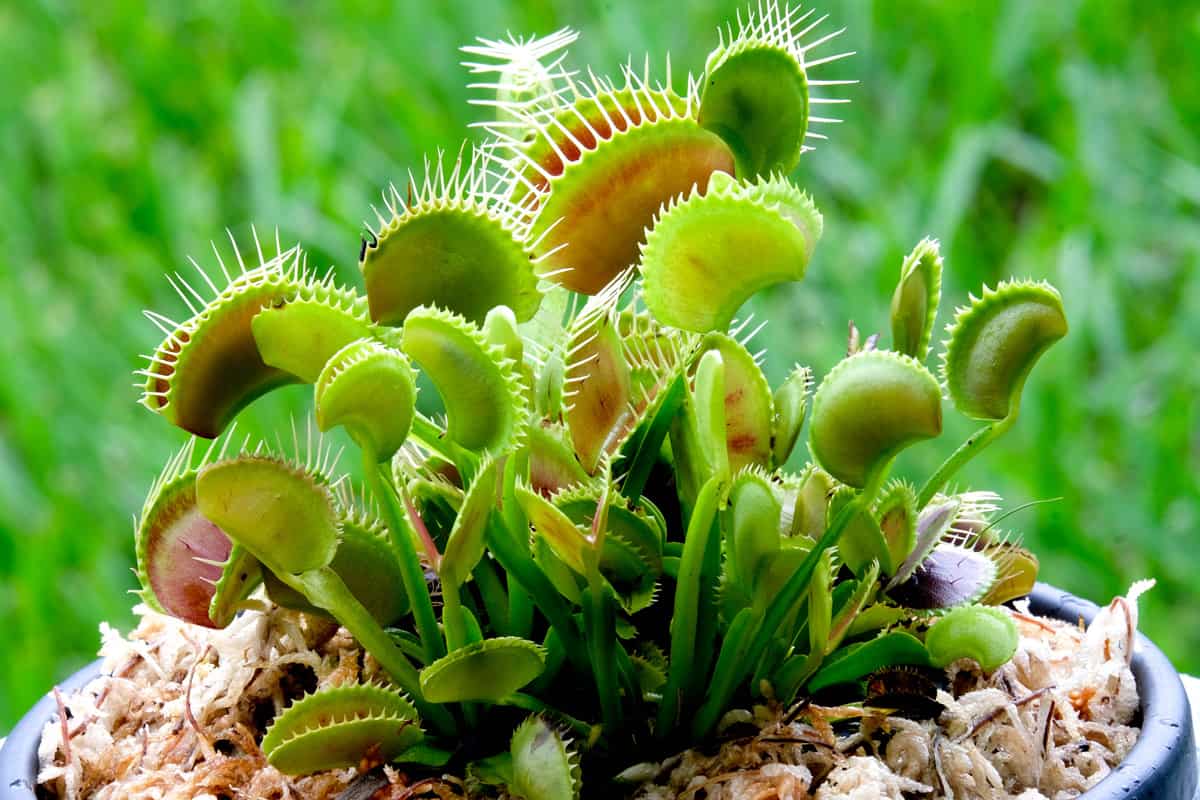
When the trichome is touched by flies, bugs, ants, or spiders, it signals the trap to close if another contact occurs soon afterward.
Repeated triggers are the plant's mechanism to conserve energy by shutting only if the prey is caught and will only begin digestion when stimulated more times by the struggling creature.
Depending on the size of the insect or arachnid, it may take between 12 hours to 5 days for the flytrap to digest and absorb the necessary nutrients and reopens approximately after a week.
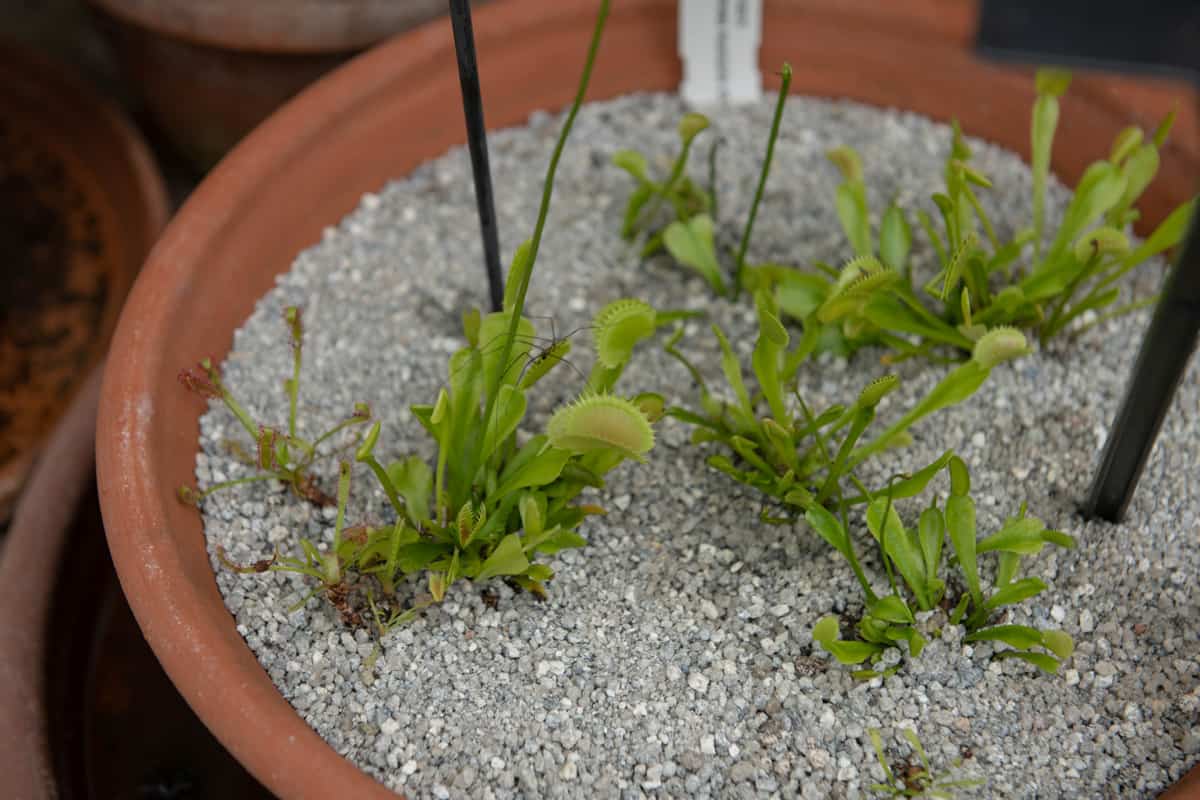
How To Repot A Venus Flytrap
It is ideal to repot your Venus flytrap annually to keep the growth medium fresh and encourage the development of the root system.
The process is relatively simple but atypical when compared to other plants. It is important to note that your Venus flytrap has unique and specific requirements that are pretty unusual.
Potting Mix/Medium
Venus flytraps are accustomed to acidic, low-nutrient soils typical of Carolina bogs and marshes. The most crucial aspect of successfully repotting them is reproducing the medium as closely as possible.
Equal portions of unenriched peat moss to acidify the mixture, and perlite to help retain moisture, is the ideal combination.
Check out Carnivorous Plant Soil Mix on Amazon.
Select a pot at least 4 inches deep with 2 inches of growing space around the rootball of your plant. Venus flytraps are relatively small even at maturity, but their root systems need room to develop and produce more growth.
Repotting Procedure
Fill about 3/4 of the new pot with peat moss and perlite, then water the mixture so the components settle evenly. Only purified or rainwater since the plant cannot tolerate chlorine or additives.
Carefully remove the Venus flytrap from its current pot and try to avoid holding the traps, and handle the plant by the rootball instead.
Gently disentangle the old medium from the roots, and you may opt for multiple separate growths from one another.
Dig a hole in the middle of the new potting mix deep and wide enough to accommodate the entire root system. Position the plant and set the soil up to the base of your Venus flytrap.
Rewater the pot thoroughly and set it in partial shade for a few days.
Tips For Transplanting Success
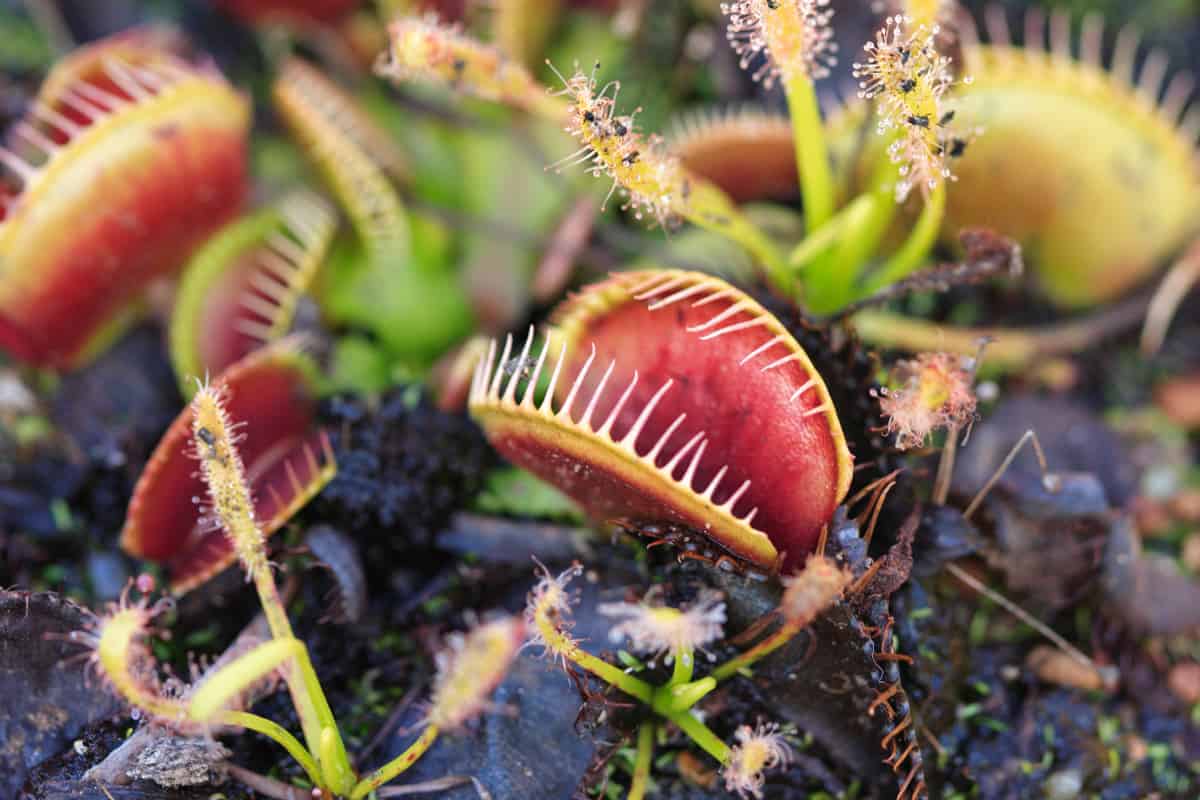
- When repotting your Venus flytrap, do not remove and be alarmed when you see white rhizomes among the roots. These bulbous sections help the plant produce or develop new shoots and roots.
- When transplanting, be gentle and hold the rootball instead of the stem to avoid triggering the traps.
- It is time to repot your Venus flytrap if the plants already seem crowded in their container. Slow-growing cultivars may need to be transplanted every two years.
- Uproot and transplant during the spring since this is the end of the dormancy period.
- You may add a layer of sand (1/2 inch) on the surface to protect the upper section of the plant from being in contact with moisture. This prevents or discourages the development of fungus gnats on the leaves and stems.
- When layering the rhizome with moss, avoid covering the new shoots.
How Do You Care For A Venus Flytrap
In most cases, cultivated or domesticated varieties have a shorter lifespan than those growing in their natural habitat because they tend to receive improper care and maintenance.
You must follow this simple guide for your plant to remain healthy and alive.
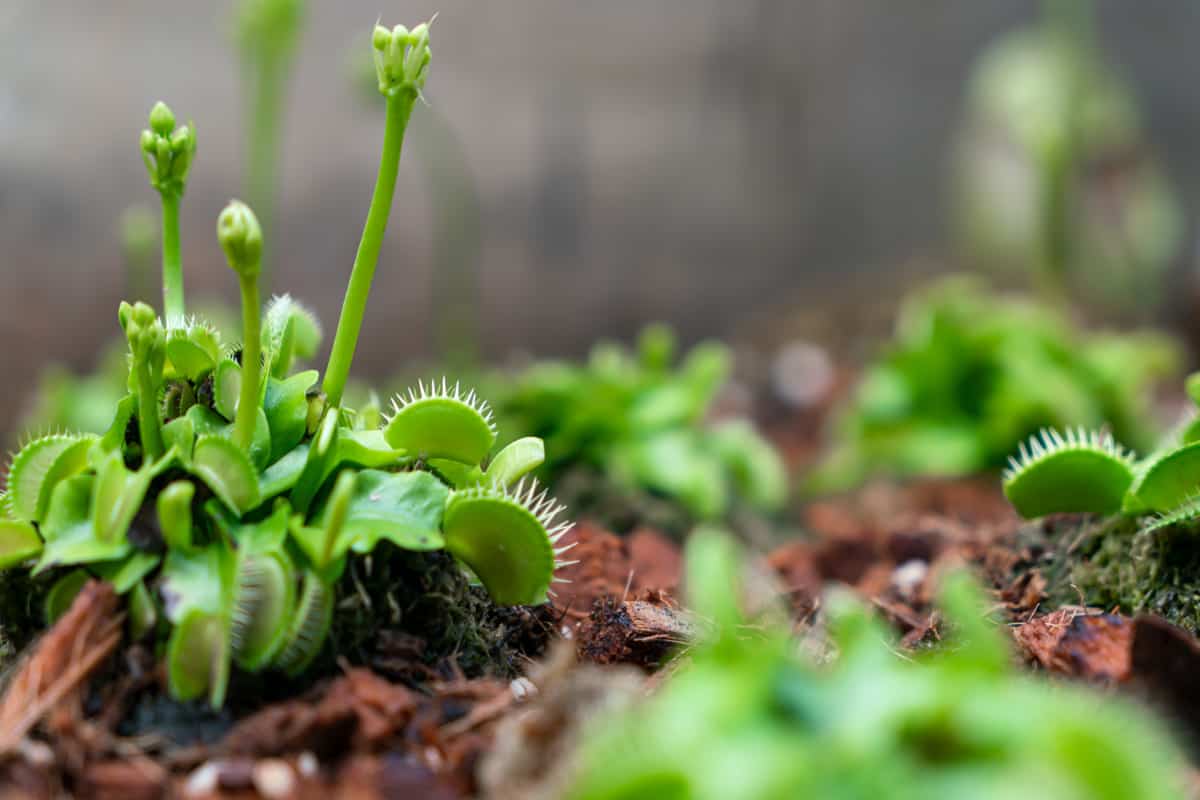
Light
These carnivorous plants are best grown outdoors since they require a lot of sunlight and can feed on insects naturally.
Venus flytraps need at least 4 hours of direct sunlight daily and do not grow well in the shade.
Water
Since venus flytraps naturally grow in freshwater wetlands or boggy environments, they are very particular in their hydrating requirements.
It is ideal for keeping the pot or medium moist or damp by simply allowing the base to settle in water for a few hours several times a week.
Always check the soil and do not let it dry out. Planting moss on the surface can help keep the potting mix moist.
The plant is relatively sensitive to tap and purified water and must only be hydrated using distilled, reverse osmosis, and rainwater.
Soil
The soil is one of the most significant factors that affect a venus flytrap’s growth and development.
Growing them in poor nutrient environments is necessary simply because it is the medium they are accustomed to.
Feeding
Since the plant has adapted to the general conditions of its environment, it evolved into a carnivorous being that feeds on insects and arachnids.
If grown outdoors, they are relatively capable of sustaining themselves; however, they may need to be fed with bugs once or twice a month when placed indoors.
No matter how curious you are, do not try to supplement your diet with other food besides their natural nutrition source. Apart from this, avoid feeding the plant throughout the dormant season.
Dormancy
During the dormancy period, the plant is inactive and dies but requires sufficient moisture. Do not worry! This is a natural process that helps them survive the winter season.
Keep the plant in a cool unheated area inside your home where it can receive enough light exposure, preferably near a window. At this time, feeding is unnecessary since they remain dormant until the end of the cold season.
Note that a Venus flytrap needs to undergo dormancy as part of its natural life cycle. Failure to do so causes considerable stress to the plant and may even lead to its death.
Usually, they can skip one dormancy season; however, they may become slightly inactive during summer or spring.
Fertilizer
Because venus fly trap prefers naturally poor growing conditions and receives adequate nutrients from insects and spiders, supplementing them with fertilizers is not recommended.
Your plant will wilt and die because it is not accustomed to growing in soils rich in nutrients and minerals.
Is Miracle-Gro Good For Venus Flytrap?
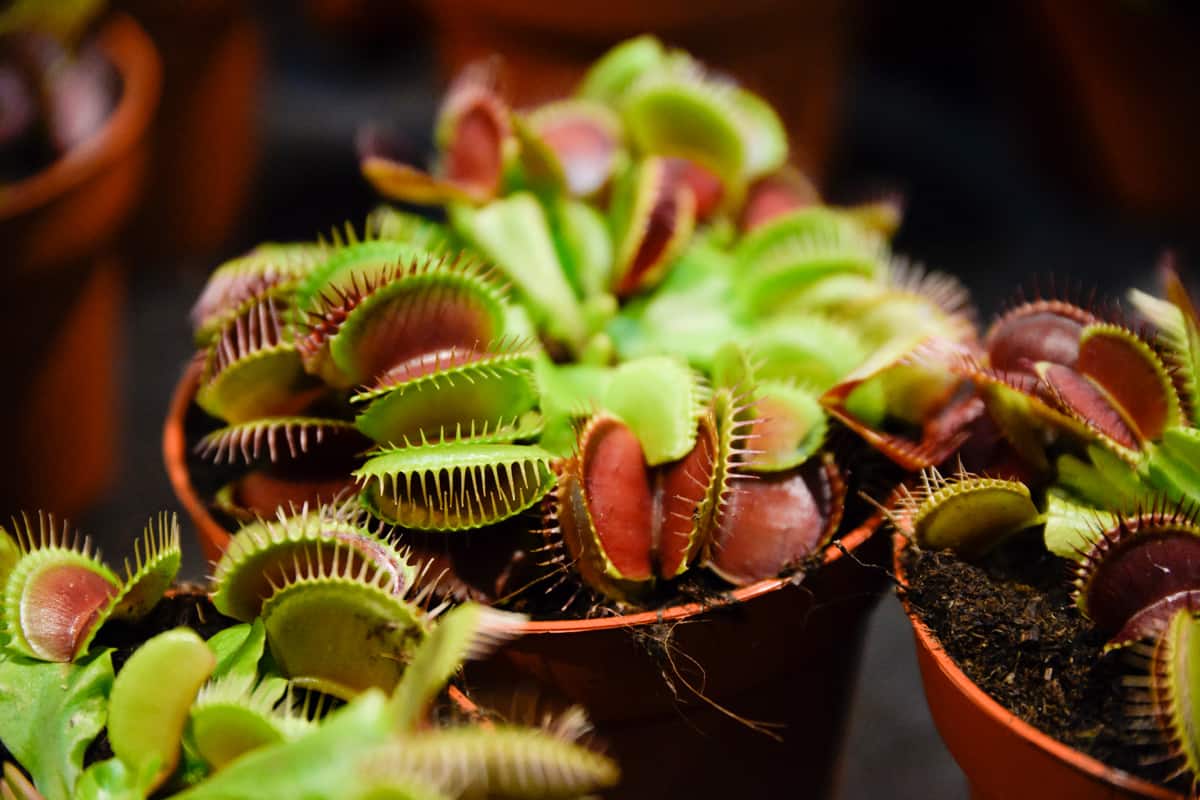
Miracle-Gro is a brand that manufactures gardening products used for plant feeding.
It is, however, not recommended for use since the merchandise contains fertilizers that may otherwise kill your Venus flytrap.
Can I Use Cactus Soil For Venus Fly Trap?
A Venus fly trap cannot be planted in cactus and succulent soils because the medium will introduce new elements or nutrients that the plant is not accustomed to.
Using a combination of peat moss and perlite is ideal in the potting mix.
To Wrap Up

Repotting a Venus flytrap is simple if you provide them with the right potting mix. Proper care and maintenance are essential in keeping them healthy and alive.
We hope the article helped make transplanting easier and more fun. Happy gardening!
Made it to the end? Check out these helpful related articles!

